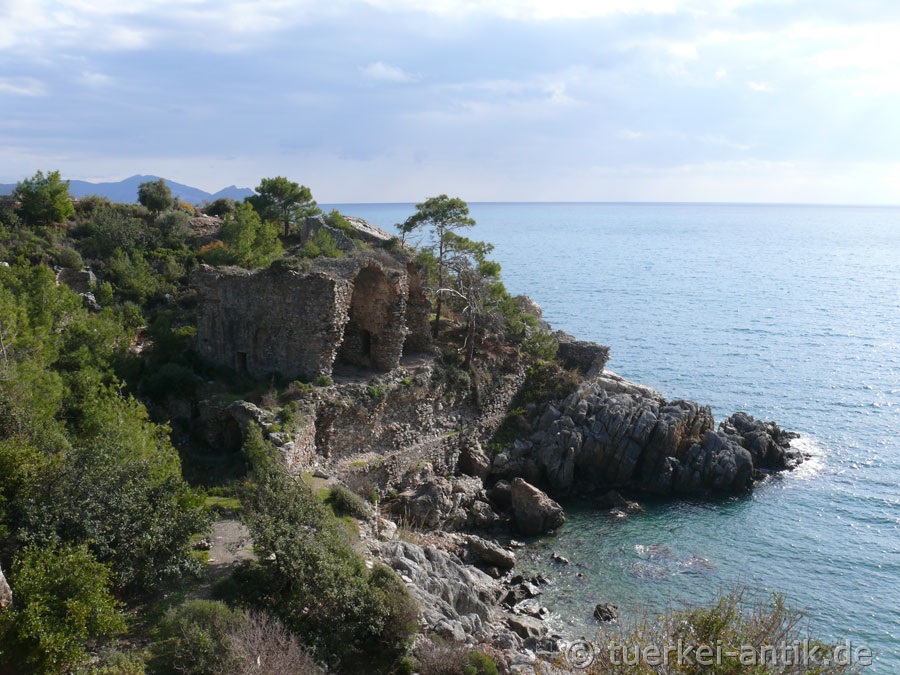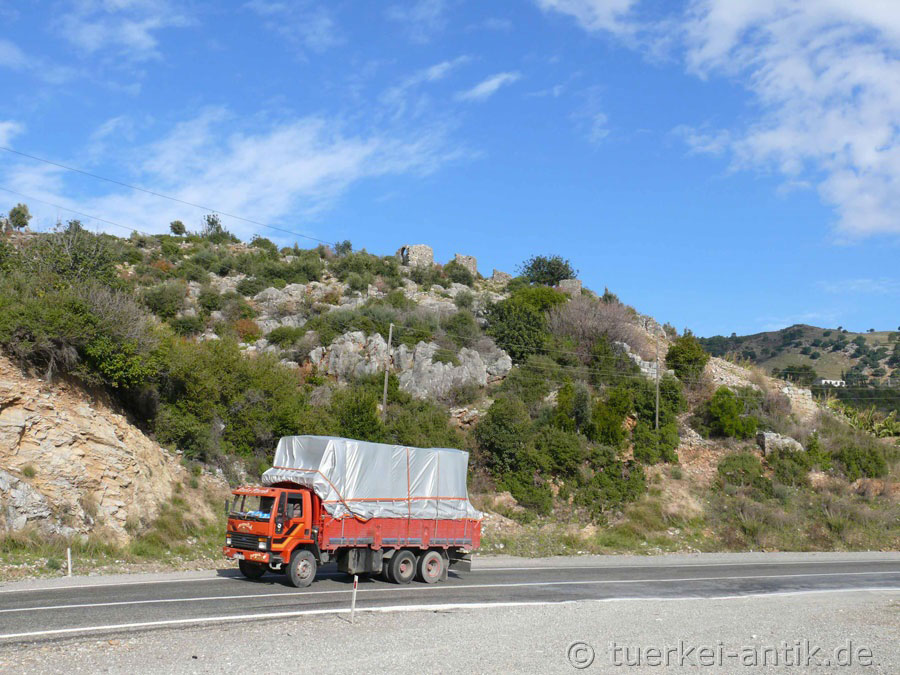 |
| Iotape in Cilicia | |||
|
|
|
||
| The Acropolis of Iotape | |||
|
Little is known about the city from history. Like the nearby Antiochia ad Cragum, it was founded by Antiochos IV von Kommagene (38-72 AD). It was named after his daughter after the Roman Emperor Claudius entrusted him with control of the "Rough Cilicia" in 41 AD. From the beginning of the 2nd century AD, i.e. during the reign of Emperor Trajan, until the middle of the 3rd century AD, during the reign of Emperor Valerian, the city minted its own coins. |
|||
|
|
|||
| The harbour baths | |||
|
The most striking ruin of the ancient city is the former harbour baths. The sewage system belonging to the bathhouse has been preserved to this day. |
|||
|
|
|||
| The harbour baths | |||
|
|
|||
| The coast road (D400 old) | |||
|
|
|||
|
The former city was divided into two parts by the construction of the coastal road. The acropolis on the peninsula was extensively fortified. Remains of the city wall and a watchtower are preserved. |
|||
|
|
|||
|
|
|||
| Remains of the Acropolis fortification and a watchtower | |||
|
|
|||
|
|
|||
| Building next to the harbour baths | |||
|
|
|||
|
On the land side, the farm dog of the local farmer guards the area. In addition to a Byzantine church ruin, there are several remains of undefined houses and the necropolis. Many of these graves fell victim to the agricultural use of the site, but some larger vaulted tombs have been preserved. |
|||
|
|
|||
|
|
|||
|
Inscription |
|||
|
Inscriptions still prove that the city became famous through successful athletes. Rich and generous citizens also contributed to the city's fame. |
|||
|
Iotape is located about 35 km east of Alanya and about 9 km before Gazipasa. About 10 km after the Hotel Utopia World, the castle-like estate at the end of Mahmutlar, there is a turn-off near the village of Kesefli, which leads to the old route of the D400. From there it is 8.5 km to the peninsula with the Acropolis of the city. The old section of the D400 national road cuts through the former city area. Passing by, one almost overlooks the remains of the once proud city. Look out for the clearly visible Kale Restaurant on the sea side and immediately afterwards you will see the rocky outcrop of the former Acropolis. The old national road D400 was built by the former city without regard to the historical finds. The new section of the D400, which passes close to Gazipasa airport, no longer touches the ruins of the city. Fears that the expansion of the road could destroy even more have fortunately proved to be void. |
|||
| Photos: @chim | |||
| Translation aid: www.DeepL.com/Translator | |||
| Source: Wikipedia and others | |||
|
|
|||



